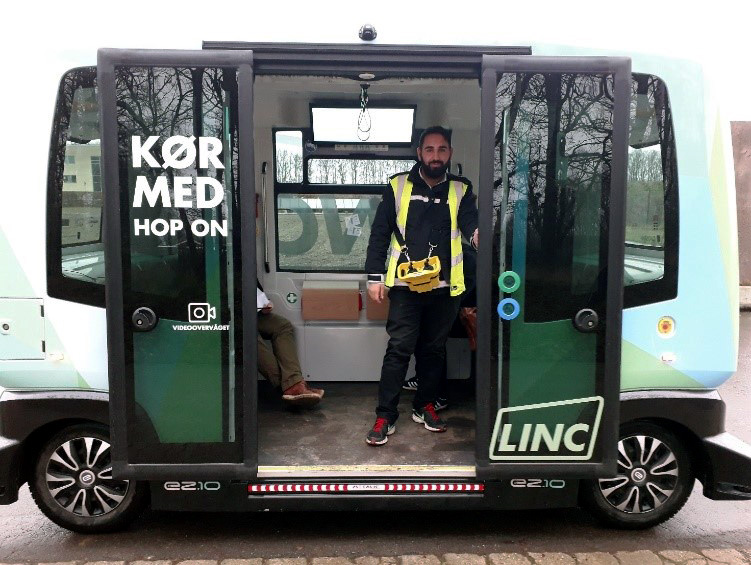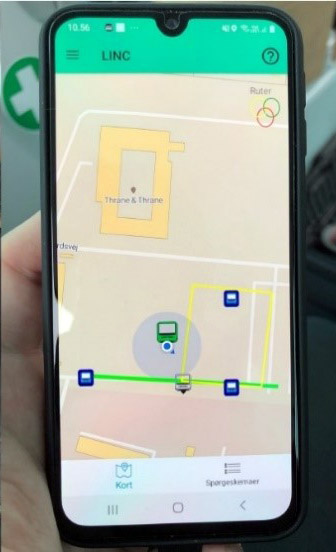
Self-driving shuttle finds the fastest route to your destination using a new app
Scroll ned for at læse mere

Scroll ned for at læse mere
By Jonathan Storm Simonsen
Imagine arriving at a station and having to move on quickly. You hop on a self-driving shuttle that has foreseen where and when you need it most and which route is the smartest so you can get through city traffic quickly.
That is precisely the purpose of the app, which will be part of an upcoming test of self-driving shuttles at DTU Campus in Lyngby. For now, the test of the app takes place on a closed test lane where the self-driving shuttles from Easymile run with test passengers to test how passengers accepts the technology behind the new app solution.
“We test the interaction between the self-driving shuttles and the app solution we have developed. It allows us to see if the app solution actually works and collects the data we need,” says Dan Roland, research assistant at DTU Compute, who is involved in the test through the LINC project.
In order to adapt the self-driving shuttle’s routes to the needs of the passengers, data is needed on how the passengers move around campus. Once the test passengers have the app open on their phone, data on their movement patterns are sent to a database via beacons set up in the test area.
The data will be used to create a more flexible self-driving shuttle service driven by passenger needs. The more data available on passenger travel patterns, the better the self-driving shuttles can plan flexible routes.
“The idea is that we can adjust when the shuttle runs and what route it runs, according to what the passenger needs. One can imagine that the shuttles’ route changes during the day, depending on whether the passengers are going to or from work. It hopefully improves travel time and the passenger experience significantly but can also ensure that the shuttle isn’t half empty,” explains Claus Klint, director of Internet of Things at IBM Denmark.
The app will provide test passengers with travel information in Danish and English. It will be possible to find information on stops, routes and departure times. In addition, app users will be able to see where the individual shuttles are located and receive information on any deviations and operational changes. In the longer term, the app can be integrated with the Rejseplanen.
In order to get the best possible knowledge of the passengers’ experience with the self-driving shuttles, they will also receive short questionnaires about their journey via the app, immediately after they get off the bus. It is intended that various predefined events may trigger send out of questionnaires for the test passages. Roskilde University (RUC) examines the test passengers’ experiences with the self-driving shuttles through questionaires.
“One can imagine that there has been an emergency stop and that a questionnaire is then sent to the affected passengers – almost immediately. It provides more accurate answers for RUC, which has an interest in making the experience as fresh as possible in the user’s memory,” explains Dan Roland.

LINC is one of the largest projects with self-driving shuttles in Denmark. The purpose is to develop public transport so that it remains an attractive and green choice for citizens in the future. The vision is that self-driving shuttles can be a last-mile solution in connection with the upcoming light rail along Ring 3 in Greater Copenhagen.
The partners in the project are: Albertslund Municipality, Gladsaxe Municipality, Nobina Danmark A/S, IBM Danmark, Technical University of Denmark, Roskilde University and Gate 21.
LINC is funded by the partners and the EU program Urban Innovative Actions (UIA), which has contributed DKK 25 million.